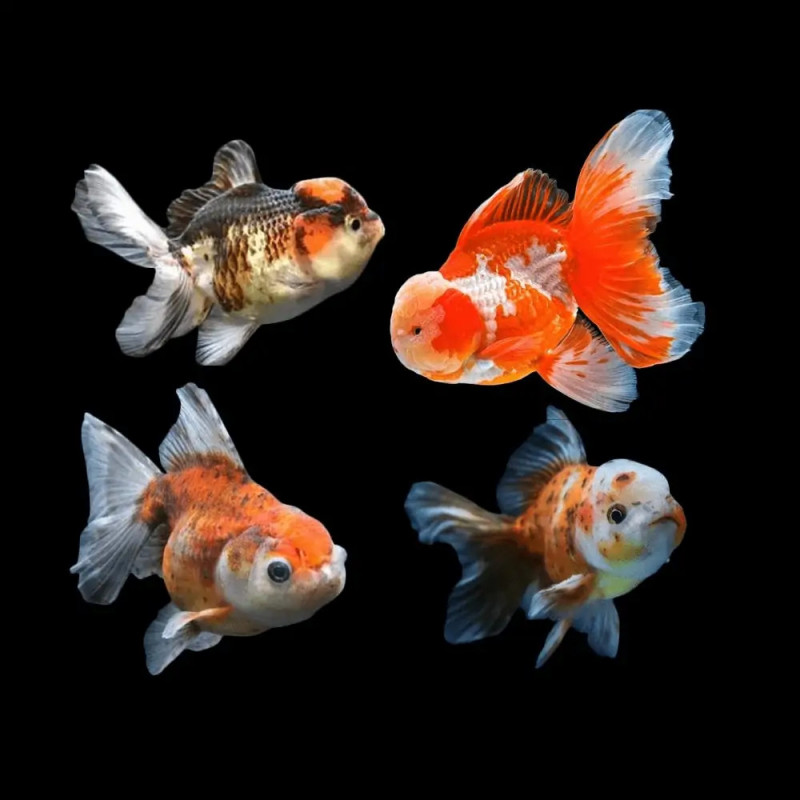Stocks Available
GOLDFISH-RYUKIN-RED
SKU:118559
CARASSIUS AURATUS
3 INCH

Stock Available
Introduction: • Species: Goldfish • Common Names: Oranda Goldfish • Natural Habitat: Oranda Goldfish are domesticated and bred in captivity. They do not occur in the wild, but they originate from East Asian selective breeding practices. Physical Characteristics: • Appearance: Orandas are known for their rounded bodies and the prominent fleshy growth on their heads called a "wen." They come in a variety of colors, including red, white, black, and orange, with mixed patterns. • Size: They typically grow up to 8-12 inches (20-30 cm) in length. • Lifespan: Oranda Goldfish can live 10-15 years or longer with proper care. Habitat Requirements: • Tank Size: A minimum of 30 gallons is required for a single Oranda, with additional space recommended for more fish. • Water Conditions: o Temperature: 65-72°F (18-22°C). o pH: 6.5-7.5. o Water Hardness: Prefer moderate hardness levels. • Aquascaping: Provide smooth surfaces and decorations to prevent damage to the fish's delicate wen. Orandas are best suited for tanks with ample swimming space and gentle filtration to maintain water quality. Diet: • Primary Diet: Omnivorous; their diet includes small insects, algae, and plant matter. • Supplemental Feeding: Provide high-quality goldfish pellets or flakes, along with occasional live or frozen foods such as bloodworms and brine shrimp, and vegetables like peas to aid digestion. • Feeding Frequency: Feed 2-3 times daily, offering small portions to avoid overfeeding. Compatibility: • Temperament: Peaceful and sociable, Oranda Goldfish do well in community tanks with other similarly-sized, non-aggressive fish. • Suitable Tank Mates: Compatible with other fancy goldfish varieties such as Ryukins, Fantails, or Lionheads. • Incompatibilities: Avoid fast-swimming or aggressive species that might outcompete them for food or nip at their fins. Care Level: • Difficulty: Moderate; they require stable water conditions and regular maintenance to thrive. • Health Monitoring: Orandas are prone to swim bladder issues, infections in the wen, and other common goldfish diseases. Regular monitoring is necessary to detect any issues early. Breeding: • Breeding in Captivity: Breeding Orandas is possible in captivity. They are egg layers, and spawning is encouraged by slightly raising water temperature and feeding a rich diet. • Spawning: They lay eggs on plants or other surfaces, and adults should be separated from the eggs to prevent them from eating them. Economic Considerations: • Market Demand: High demand among aquarists for their unique appearance and variety of colors. • Wholesale Pricing: Moderately priced based on size and coloration. • Retail Pricing: Prices vary, with premium specimens costing more depending on their color patterns and wen development. Sustainability and Conservation: • Wild Population: Not applicable, as Orandas are a domesticated species. • Aquaculture Efforts: Bred extensively in captivity. Conclusion: The Oranda Goldfish is a popular choice among hobbyists for its distinctive appearance and gentle demeanor. While they require moderate care and attention to their water conditions and diet, they can thrive in home aquariums, offering long-term enjoyment. Their variety of colors and unique head structure make them a standout in any tank setup.
Data sheet
15 other products in the same category:
Customers who bought this product also bought: